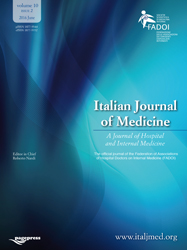The role of bronchial washing of transforming growth factor β1 as a prognostic biomarker of advanced stages of non-small cell lung cancer
All claims expressed in this article are solely those of the authors and do not necessarily represent those of their affiliated organizations, or those of the publisher, the editors and the reviewers. Any product that may be evaluated in this article or claim that may be made by its manufacturer is not guaranteed or endorsed by the publisher.
Authors
Lung cancer includes all malignant diseases in the lungs, both primary malignancies and metastases. Globally, there are approximately 2.2 million new lung cancer cases each year, with 1.8 million deaths recorded in 2020. In Indonesia, lung cancer is the leading cause of cancer-related deaths, accounting for 30,843 cases (13.2%), with 34,873 new cases (8.8%). The prognosis of lung cancer patients is generally poor due to late-stage diagnosis and the absence of non-invasive early detection methods. Chronic inflammation plays a crucial role in lung cancer progression, as inflammatory and tumor cells release cytokines and chemokines that influence cancer development. Transforming growth factor β1 (TGF-β1) has been identified as a potential biomarker for lung cancer prognosis. This analytical observational study employs a retrospective cohort design. TGF-β1 levels in bronchial washing fluid from non-small cell lung cancer (NSCLC) patients diagnosed at Dr. Wahidin Sudirohusodo Hospital, Makassar, were analyzed. Patients were followed for one year to assess disease progression and survival. Samples collected from June 2022 to May 2023 were stored at -80°C before analysis at the Hasanuddin University Medical Research Unit. TGF-β1 levels in bronchial washing showed a cut-off value of 1638.22 pg/ml with 62.1% sensitivity and 95.5% specificity, indicating its potential as a prognostic biomarker. Higher TGF-β1 levels correlated with advanced disease stages and shorter survival rates. Increased TGF-β1 levels in NSCLC patients are associated with poor prognosis and reduced survival. Thus, TGF-β1 serves as a valuable prognostic biomarker in NSCLC.
How to Cite

This work is licensed under a Creative Commons Attribution-NonCommercial 4.0 International License.
PAGEPress has chosen to apply the Creative Commons Attribution NonCommercial 4.0 International License (CC BY-NC 4.0) to all manuscripts to be published.






